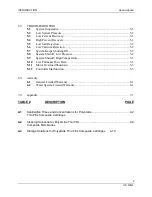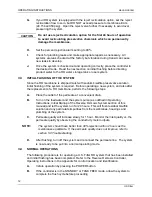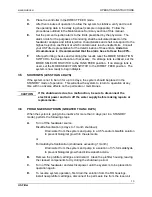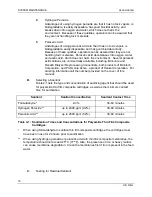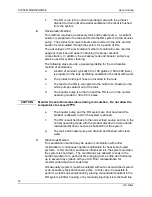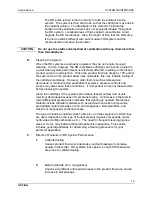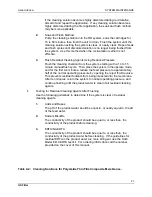
SYSTEM MAINTENANCE
MANOWNROSM
US Filter
16
2.
Hydrogen Peroxide
Advantages of using hydrogen peroxide are that it has no toxic vapors, is
biodegradable, is easily disposable, has good biocidal activity, and
breaks down into oxygen and water, which does not harm the
environment. Because of these qualities, operators can be assured that
they are not handling toxic materials.
3.
Peracetic Acid
Advantages of using peracetic acid are that it has no toxic vapors, is
biodegradable, easily disposable, and has good biocidal activity.
Because of these qualities, operators can be assured that they are not
handling toxic materials. Peracetic acid decomposes into oxygen, water,
and acetic acid, which does not harm the environment. Several peracetic
acid solutions are commercially available, including; Minncare and
Renalin Dialyzer Reprocessing Concentrate, both products of Minntech
Corporation, and P3-Oxonia Active, a product of Henkel Corporation. For
ordering information call the number provided on the cover of this
manual.
B.
Selecting a Sanitant
Table 4-1 lists the type and concentration of sanitizing agent that should be used
for polyamide thin film composite cartridges, as well as the minimum contact
time for sanitization.
Sanitant
Sanitant Concentration
Sanitant Contact Time
Formaldehyde *
2-3%
30-60 minutes
Hydrogen Peroxide **
up to 2000 ppm (0.2%)
30-60 minutes
Peracetic Acid **
up to 2000 ppm (0.2%)
30-60 minutes
Table 4-1: Sanitization Times and Concentrations for Polyamide Thin Film Composite
Cartridges.
*
When using formaldehyde to sanitize thin film composite cartridges, the cartridges must
have been in use for 24 hours prior to sanitization.
**
When using hydrogen peroxide or peracetic acid with thin film composite membranes, the
temperature should not exceed 25
°
C (77
°
F). Also, the presence of iron or heavy metals
can cause membrane degradation. Clean the membranes first if iron is present in the feed
water.
C.
Testing for Residual Sanitant

